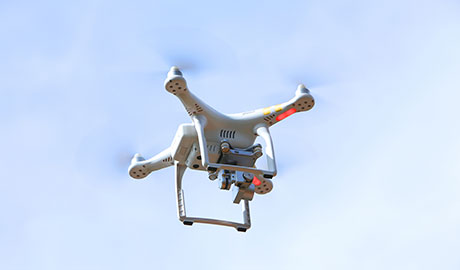(Image credit: Antonio Scorza / Shutterstock.com) The era of the “killer robot” hasn’t arrived, exactly, but it may not be far off. Police and the military have been using these machines for decades now to disarm bombs and provide reconnaissance in areas where it would be risky to send officers or soldiers.
When Dallas Police equipped a robot with an explosive device and sent it in to take out a sniper who had killed five officers, it raised eyebrows and conjured images of a gun-slinging RoboCop. It was the very first time a robot had been used to kill a suspect. The suspect had barricaded himself inside a parking garage and threatened to kill more police.
Equipping the robot with a bomb was an “off label” use for which it has not been designed, according to Sean Bielat, CEO of Endeavor Robotics, the nation’s leading builder of robots for the military and public safety.
Experimenting with military robots
His company has sold more than 6,000 systems with most going to U.S. or foreign militaries and a few hundred acquired by police departments. He doesn’t know if it was one of his units that was sacrificed to stop the sniper.
Even the military has never used robots to kill the enemy. The U.S. Army has experimented with equipping robots with machine guns and even deployed three units to Iraq in 2007, but they never saw combat.
Security and military robots are designed to save lives, not take them.“Our robots are tools for standoff,” explains Bielat. “We provide distance in time and space from dangerous objects, dangerous substances and dangerous situations.”
Endeavor Robotics is the former military division of iRobot, which makes the popular Rumba vacuum robot. Earlier this year, the new company was formed with financial backing from Arlington Capital Partners.
Its robots are used for bomb disposal and have become a common sight in places like Iraq and Afghanistan, where they are used to disarm roadside bomb – Improvised Explosive Devices as they’re commonly called.
 |
| Security and military robots are designed to save lives, not take them (Image credit: ell2550 / Shutterstock.com) |
These bots can also be equipped with various types of sensors that can detect hazardous chemicals or biological agents or even radiation. With cameras and laser sensors they are also adept at providing reconnaissance on enemy movement and location without endangering personnel.
“The robots can go in first, assess the situation and then the first responders, the soldiers can react appropriately,” says Bielat.
Investigating dangerous situations
Experts say it’s unlikely that other police departments will follow Dallas’ lead. Robots are pricy with military grade models going for upwards of $100,000 each. Local police rarely have the budgets to justify blowing one up even to stop a sniper. It’s likely police agencies will continue to confront similar situations with armed SWAT teams rather than robots.
An Endeavor robot was used as part of the police response to the San Bernardino shooting last December, where 80 people were attacked by domestic terrorists in a rented banquet hall.
“A robot was used to check to see if there were active shooters inside,” Bielat told the press. “It helps law enforcement without putting their own people at risk.”
Equipping robots with firepower
The idea of a gun-wielding robot also keeps coming up. The Marine Corps is testing a robotic system outfitted with sensors and cameras that can be armed with an M240 machine gun. The Modular Advanced Armed Robotic System has gone out on training patrols at Camp Pendleton.
If it survives testing, the bots could be deployed with 13-person infantry squads that form the heart of combat units. With soldiers typically equipped with small arms, the robot could offer extra fire power with its mounted machine gun.
In the meantime, robots will likely continue to become more commonplace on the battlefield. Experts predict within the next decade robots are expected to outnumber human soldiers by 10 to 1.
Read Part 4 of our Robots In Security Series here










































